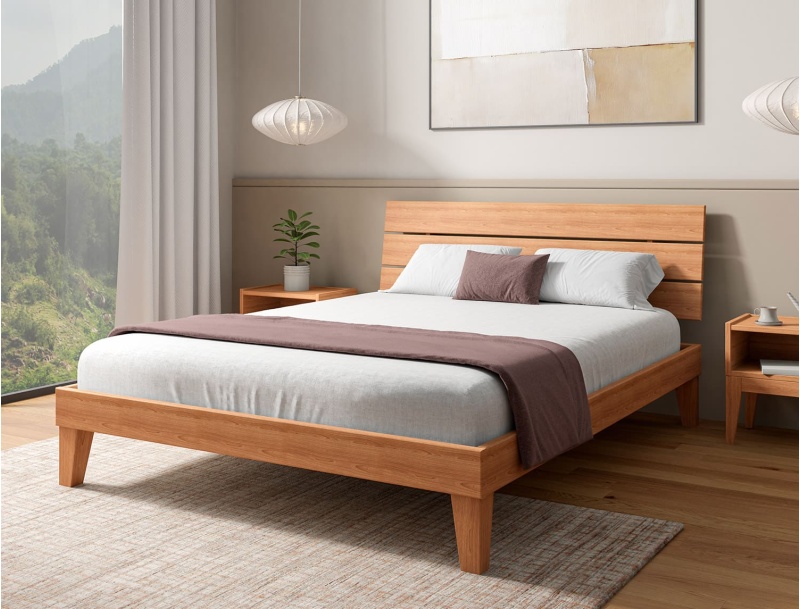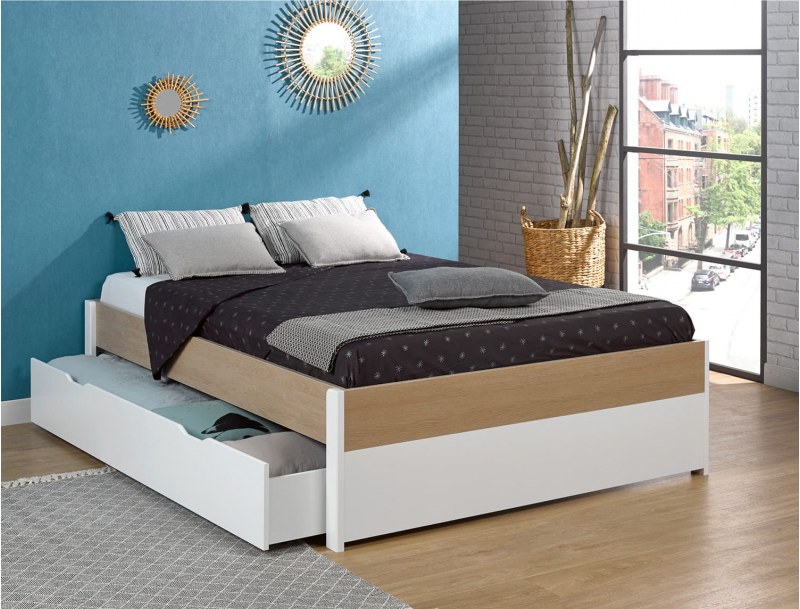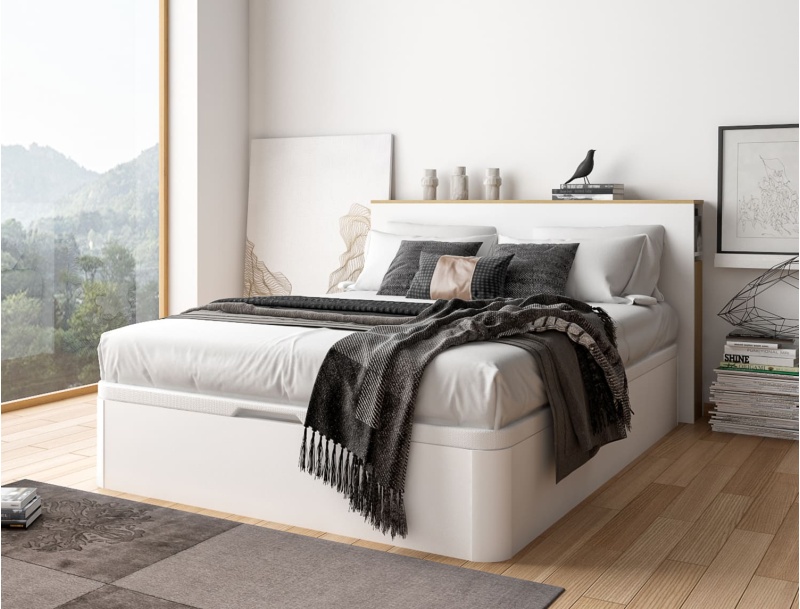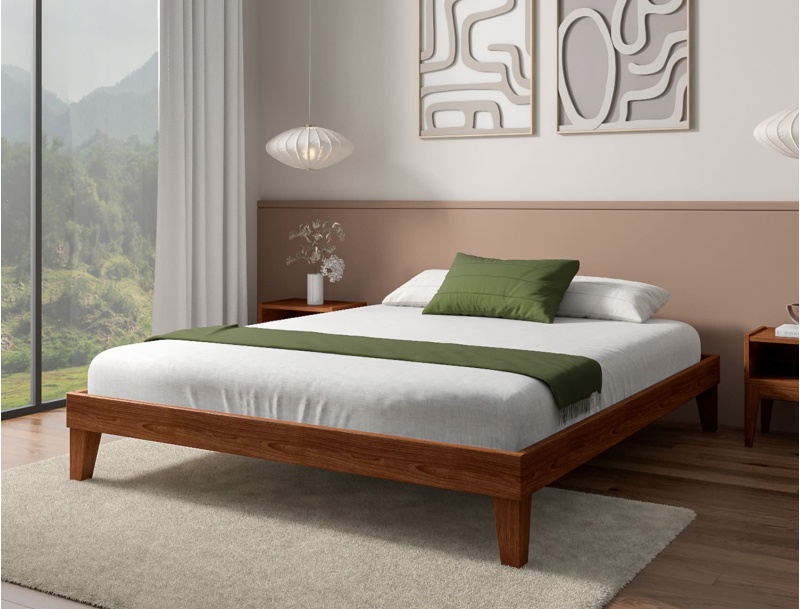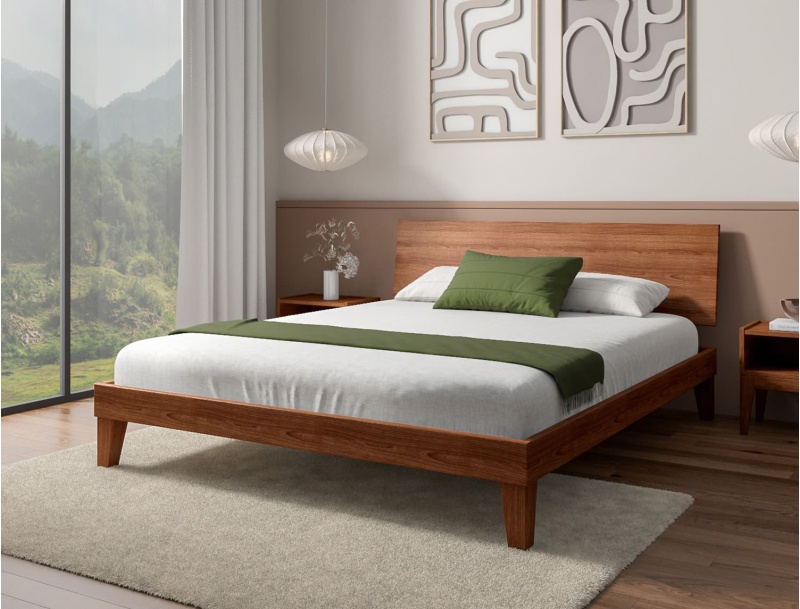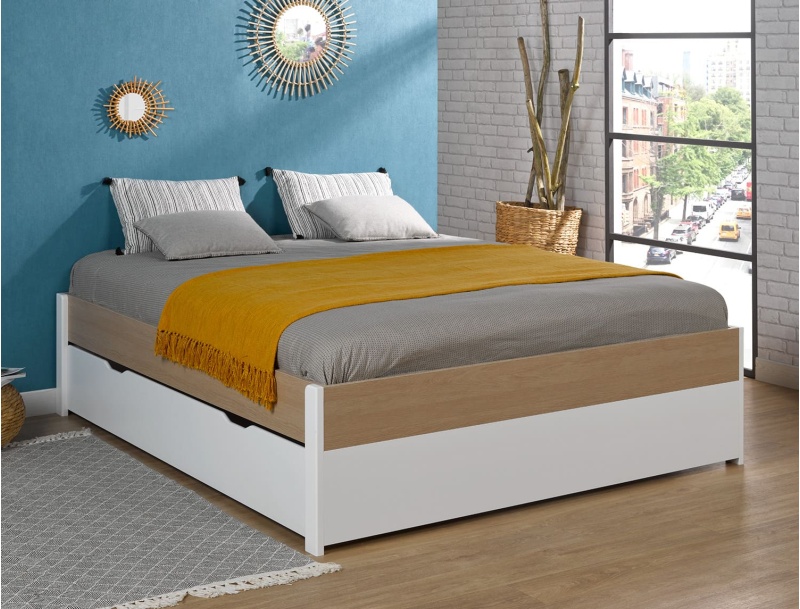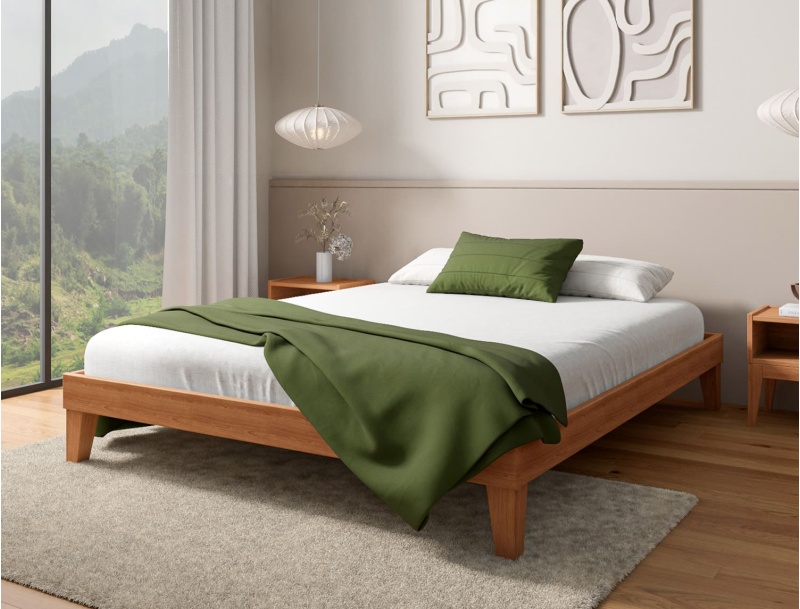What is the best bed orientation for good sleep and improving your sleep?
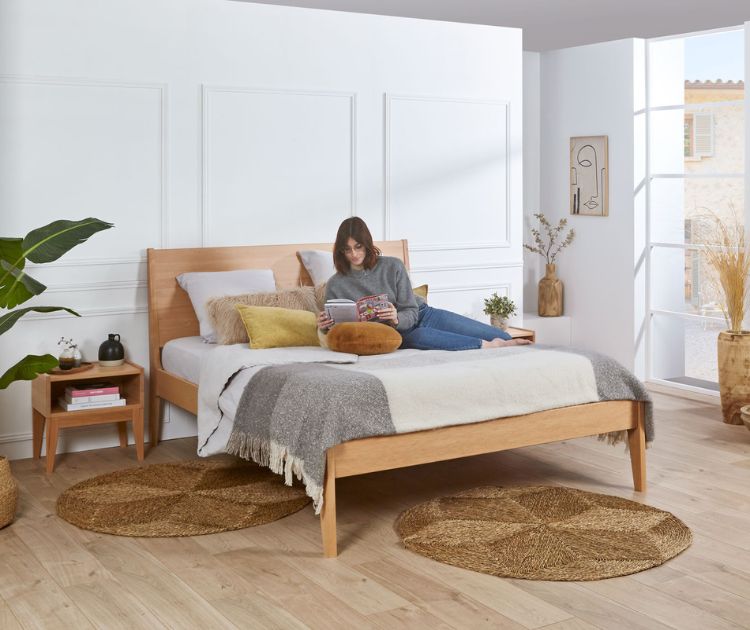
Improve your sleep through bed orientation
The orientation of your bed can influence the quality of your sleep and your overall well-being. Taking into account principles like feng shui, adjusting the position of your bed could help you sleep better and wake up more rested. Discover how this simple change can transform your nights and improve your daily balance.
Maximizing your sleep quality through bed orientation
Is sleeping with your head to the south the best bed orientation?
Did you know that the orientation of your bed could directly influence your sleep quality and, by extension, your overall health? This often overlooked detail plays a crucial role in our nightly rest. By simply adjusting the direction of your bed, you could transform your restless nights into a true haven of peace. But why is this aspect so determining?
Sleeping with your head oriented towards the south is often considered the best position to promote restorative sleep. This orientation, inspired by geomagnetic principles, would naturally align the body with the Earth's magnetic field. According to some traditions, particularly from Feng Shui and Ayurveda, this direction would facilitate a better circulation of vital energy, or "chi", while reducing stress and improving the quality of nightly rest. Sleeping with your head to the south could also optimize cellular regeneration and bring greater emotional stability thanks to a harmonious balance of body and mind. Thus, choosing this orientation for your bed would be ideal to fully enjoy deep and peaceful sleep every night.
Aligning your bed with the surrounding natural forces can subtly but powerfully influence your body and mind. A poorly oriented bed can cause problems like insomnia, while good placement promotes quick falling asleep, better recovery, and a lasting feeling of well-being.
Is this a simple belief or a scientific reality? Studies show that body positions during sleep, combined with environmental factors such as noise and temperature, can affect our circadian rhythm. Therefore, optimizing bed orientation is not just a matter of ideology or tradition: it's an approach based on concrete principles that touch the very core of our vital need for restorative sleep.
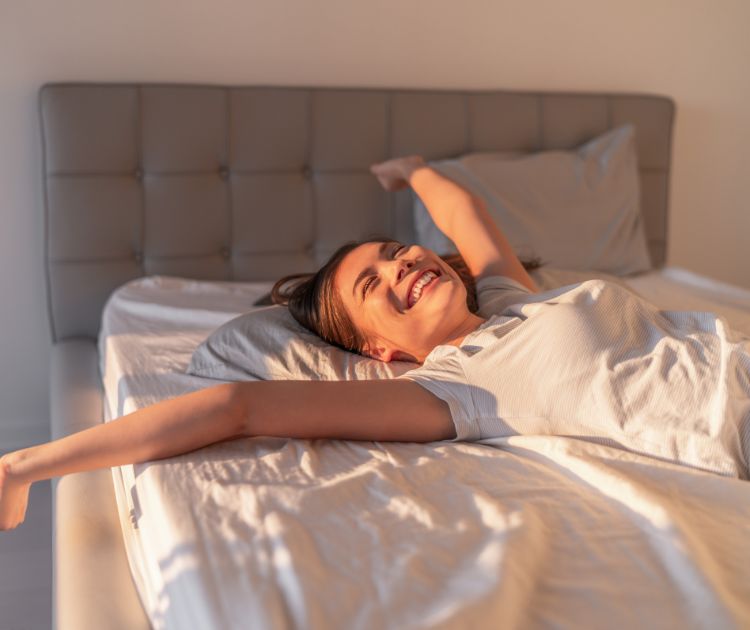
Exploring different bed orientations
Sleeping with your head to the North: myth or reality?
The idea that sleeping with the head facing North promotes better rest is based on ancient beliefs. This orientation would be ideal for aligning one's body with the Earth's magnetic forces. This is said to have a calming effect on the nervous system, reducing mental agitation and promoting a deep state of inner peace. However, some cultures see a connection with death, as this position is traditionally used in funeral rites in certain regions of the world.
The South: A Dynamic Direction
On the other hand, sleeping with your head towards the South is often associated with a boost in vital energy. According to research conducted in Asia, this orientation would not only improve sleep quality but also emotional harmony, due to better blood circulation in the body. This could explain why this position is recommended in several traditional systems such as Ayurveda.
East and West orientations: between balance and stability
Sleeping oriented to the East symbolizes renewal and growth – perfect for those looking to stimulate their motivation and creativity from the morning! Conversely, orienting your bed towards the West brings more emotional stability and encourages a lasting feeling of contentment, although some find it can slow down their daily dynamism. Each direction thus has its own subtle impacts on our daily lives.
And for your child?
The orientation of the bed in a child's room is just as important to ensure peaceful nights for your little one. Make sure to place the child's bed in a position that promotes a feeling of security and well-being. This choice also contributes to better energy circulation, according to feng shui principles. A well-arranged children's room, with a correctly oriented child's bed, can have a positive impact on the quality of their sleep and overall development.
Relationship between bed orientation and Feng Shui
Understanding the art of Feng Shui
Feng shui, this ancient Chinese art focused on harmony between individuals and their environment, places particular emphasis on the arrangement of furniture in a home – and especially in the bedroom. Why does it place so much importance on the bed? Because it is considered the central point where our vital energies converge!
The key principle is based on the smooth circulation of chi, this invisible vital energy that influences our physical and mental health. Poor arrangement risks interrupting this circulation, creating energy blockages that harm our overall well-being.
Applying Feng Shui principles to your bedroom
To maximize the benefits of feng shui in your bedroom, start by choosing a strategic location for your bed. It should be placed against a solid wall to offer an increased sense of security, while avoiding being directly aligned with the entrance door or any other major opening. This prevents what experts call the "energy draft effect", which can disrupt your nights.
Additionally, avoid cluttered objects around the bed that would block natural energy flows. Instead, opt for minimalist decoration with soft colors, conducive to a soothing atmosphere.
Impacts of Earth's magnetic fields on sleep
What is a terrestrial magnetic field?
Few know it, but our planet naturally generates a magnetic field that acts as an invisible force around us. This terrestrial polarity can subtly interact with our own bioelectric field when we sleep. Sleeping in a direction opposite to these magnetic lines could cause slight physiological disturbance in the long term, particularly affecting our heart rate or deep sleep cycles.
Practical tips for optimizing your bed orientation
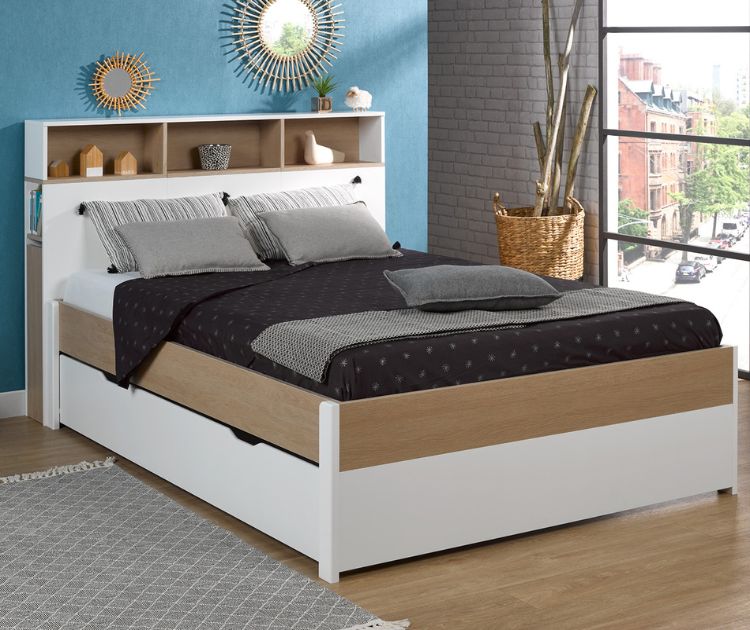
Simple and effective adjustments
Don't know where to start? Begin by placing your bed so that your head is towards the south as this position would be the most suitable for our body's needs.
Otherwise, Simply try different orientations for a few weeks to observe changes in your sleep!
Sometimes, simply moving your bed slightly can result in a noticeable improvement in terms of comfort and falling asleep quickly.
Also invest in accessories such as blackout curtains or insulating rugs to reduce external disturbances like noise or excessive heat in the room.
Emotional and experiential angle
The emotional motivations behind orientation choice
Beyond practical considerations, there is also a deeply emotional dimension linked to our personal preferences. Some choose their orientation based on an instinctive feeling of protection or even cultural attachment inherited over generations.
Testimonials and practical experiences
Many enthusiasts report having regained a unique feeling of serenity after reorienting their bed according to the principles explained here. These small adjustments may seem insignificant at first... until they completely transform your nights!
Rethinking interior design in accordance with these principles could represent much more than a simple aesthetic exercise: it's a precious opportunity to improve both physical health and emotional balance in daily life – so why wait any longer?













 Choosing the right baby blanket dimensions according to season and age
Choosing the right baby blanket dimensions according to season and age
 How to attach a headboard (with or without drilling): quick and effective soluti
How to attach a headboard (with or without drilling): quick and effective soluti
 Waterproof sheet or mattress protector: the best solution by age group
Waterproof sheet or mattress protector: the best solution by age group
 27 Original, Useful, and Trendy Christmas Ideas for Teens 2025
27 Original, Useful, and Trendy Christmas Ideas for Teens 2025
 Christmas Activities for Baby: Creative Ideas for Home & Daycare
Christmas Activities for Baby: Creative Ideas for Home & Daycare

